Read on for a detailed mini tour of three more of the pieces (currently not) on view at CIMA.
– Figura Seduta, 1944: As Marini returned to the female nude throughout the 1930s and 40s, his treatment of the subject had both moments of stasis and flux. Figura Seduta (Seated Figure)
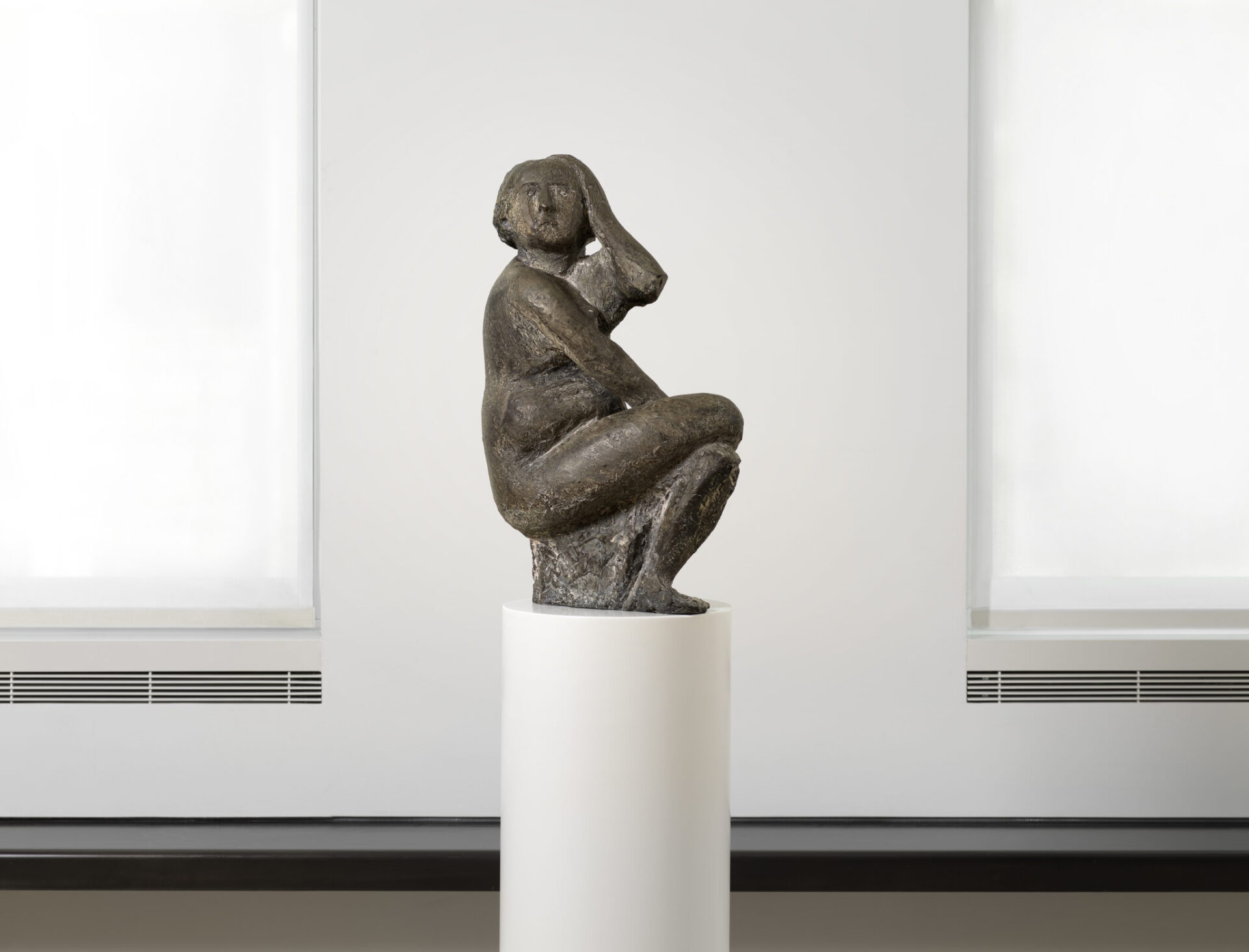
Figura seduta (Seated Figure)
1944
bronze
23 7/16 x 10 ¾ x 12 13/16 in.
(59.6 x 27.3 x 32.6 cm)
Fondazione Marino Marini – Pistoia
Photo by Dario Lasagni
exemplifies the artist’s flexibility with the nude, apparent starting at the end of 1942, when World War II escalated and Marini moved to Tenero, Switzerland. The nudes from these years experiment with form and surface, bringing Marini’s characteristic sensual and supple women to reflect the psychological devastation of war. Figura Seduta’s rounded stomach and fleshy back evoke the classical ideals of feminine beauty. However, rather than standing in proud ‘contrapposto,’ she twists her head and leg in contrary motion, giving a sense of physical discomfort.
Her right arm obscures her breasts, taking attention away from the fertility of the woman in favor of physical and mental strife, a sentiment increased by the left hand she raises to her head, as well as by her disturbed expression. At every viewpoint, Figura Seduta is instilled with drama. Which continues with Marini’s treatment of the bronze. The surface is rough and filled with striations: the body is given corporeality through texture. Among other wartime sculptures, Figura Seduta differs in the intensity of this superficial roughness. To the torqued position of the body corresponds a consternated facial expression, with barred eyes staring into the distance and the mouth contracted in a grimace of bitterness and stupor.
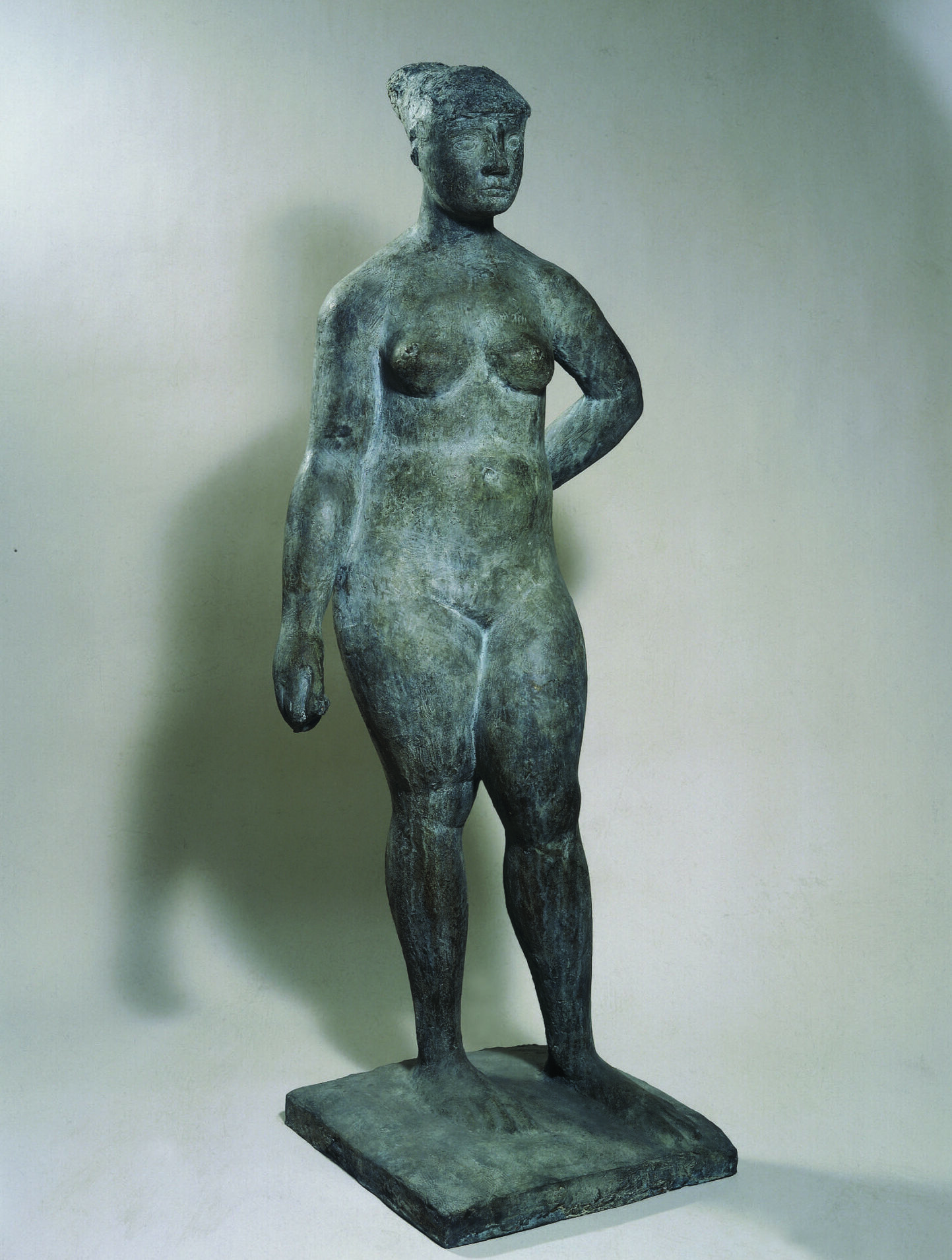
– Pomona, 1945: On loan from the Fondazione Marino Marini in Pistoia, this life size statue depicts once again, the Roman goddess of abundance and fertility, a subject to which the sculptor often returned. Though the theme reflects Marini’s reverence for ancient Rome, it is interesting to note the artist’s modernist sensibilities; she is expressionistic, as typical of his wartime pieces. Her weathered and rough surface suggests humanity. Her upward gaze inspires hope and thoughtfulness, while the downturned lips add ambiguity to her expression. Moreover, Pomona evokes the pose of Donatello’s David at Museo del Bargello in Florence: Marini engages not only with ancient history but also with the Renaissance.
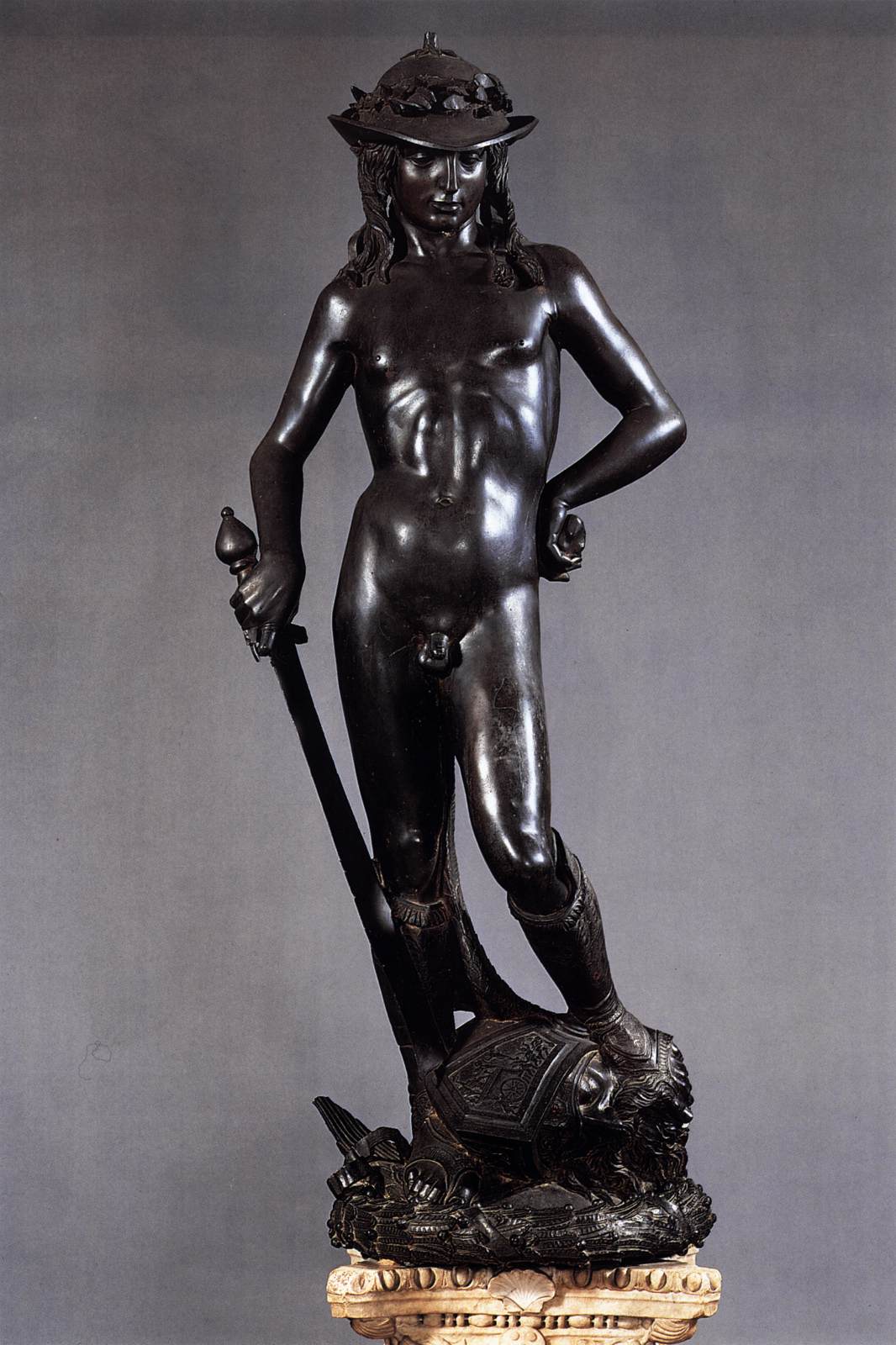
Notably, the artist excluded arms from many of his female nudes, placing the female body–voluptuous, fertile and sensuous–at the center of his representation of the goddess, abandoning traditional iconography.
This Pomona (1945) in particular however has both upper limbs, and holds an identifier apple or other spheric fruit behind her back, in her left hand. Even if Marini sometimes uses the title of Pomona broadly for his female figures, this is the only sculpture that has the actual attribute of the fruit, even though concealed in the rear of the sculpture. She is therefore constructed in a way that begs the spectator to observe her from each angle, as a fully three-dimensional figure.
– Piccolo Nudo, 1945:
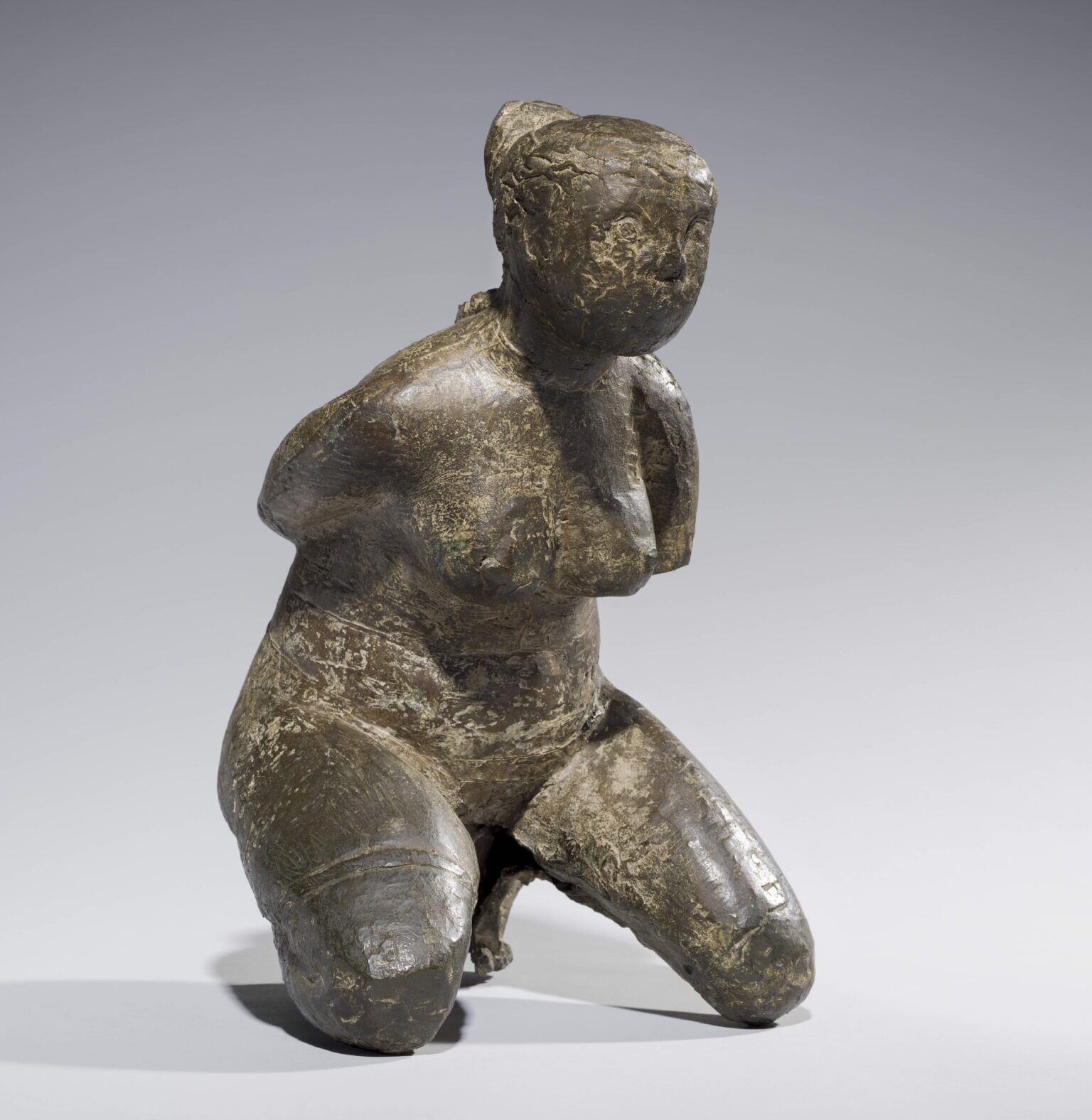
Also called Kneeling Nude, this artwork draws an interesting comparison with Auguste Rodin’s The Tragic Muse (small model)” from 1893-1894. Perhaps Marini remembered seeing the sculpture itself at the Musée Rodin. It was a crucial impulse towards a less schematic vision of Rodin than that which dominated the 1930s in Italy, when interest alternated between portraits and the monumental typology of The Thinker and The Burghers of Calais. As Francesco Guzzetti outlines in his Expressionisms, essay in Marino Marini, Visual Passions. Encounters with masterworks of sculpture from the Etruscans to Henry Moore, Rodin’s expressive exaggerations, the violence of his treatment of light on the surface, the fractures in the consistency of the forms to the advantage of a continuity of profiles in his sculpture, must have been interesting to Marini, who would not have forgotten his prophetic encounter with the old French master in Florence in 1915 at the very beginning of his aspiration to be a sculptor, and perhaps in the early 1930s had already taken some of Rodin’s practices into account.
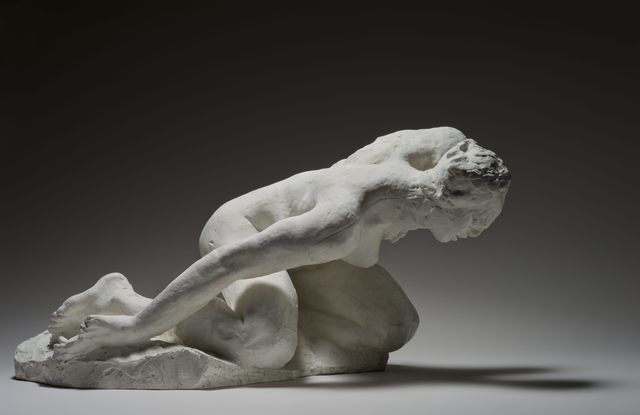
Plaster
12 3/5 × 26 4/5 × 14 4/5 in
31.9 × 68 × 37.7 cm
Musée Rodin, Paris
In this figure, in addition to the pictorial treatment of the bronze’s surface–one of Marini’s signature techniques–are interesting even the details that allude to the few garments the woman is wearing, like stockings, a thong, and a necklace. These realistic details contrast with the parts of the bronze that are left in a fragmentary state, interrupting the unity of form.
The Piccolo Nudo is therefore a unitary and original re-visiting of elements that were particularly dear to the artist, like the recovery of models derived from great artists from a more or less recent past, the somewhat fragmentary forms, inspired by what once ere archaeological finds, some realistic details, all in contrast with an almost painterly technique on the bronze surfaces.
